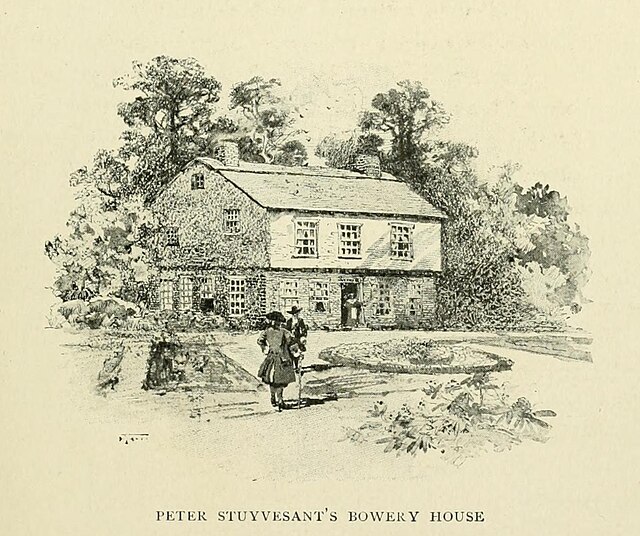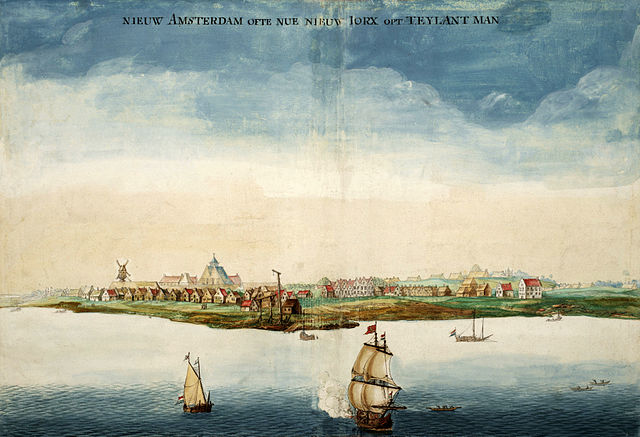Peter Stuyvesant was a Dutch colonial officer who served as the last Dutch director-general of the colony of New Netherland from 1647 until it was ceded provisionally to the English in 1664, after which it was split into New York and New Jersey with lesser territory becoming parts of other colonies, and later, states. He was a major figure in the early history of New York City and his name has been given to various landmarks and points of interest throughout the city.
Painting attributed to Hendrick Couturier c. 1660
Peter Stuyvesant's Bowery house
Stuyvesant's arrival in New Amsterdam
Peter Stuyvesant"Organizer of the first volunteer firemen in America", Volunteer firemen issue of 1948
New Netherland was a 17th-century colonial province of the Dutch Republic located on the east coast of what is now the United States of America. The claimed territories extended from the Delmarva Peninsula to Cape Cod. Settlements were established in what became the states of New York, New Jersey, Delaware, and Connecticut, with small outposts in Pennsylvania and Rhode Island.
The West India House in Amsterdam, headquarters of the Dutch West India Company from 1623 to 1647
St. Mark's Church in-the-Bowery, site of Peter Stuyvesant's grave
Image of Nieuw Amsterdam made in 1664, the year that it was surrendered to English forces under Richard Nicolls
The original New Netherland settlements at Brooklyn, Manhattan, and Jersey City have grown into the New York metropolitan area, the largest metropolitan area in the United States








